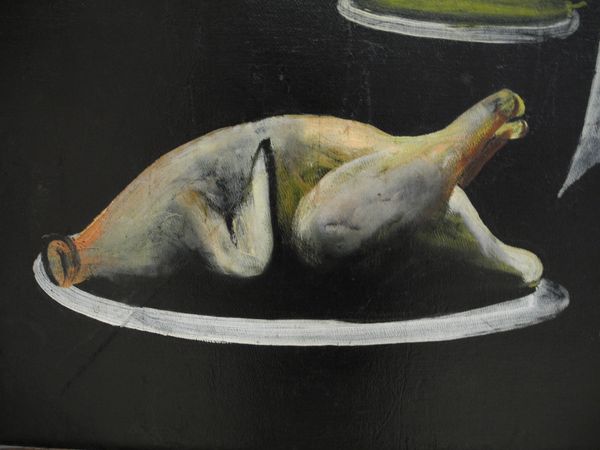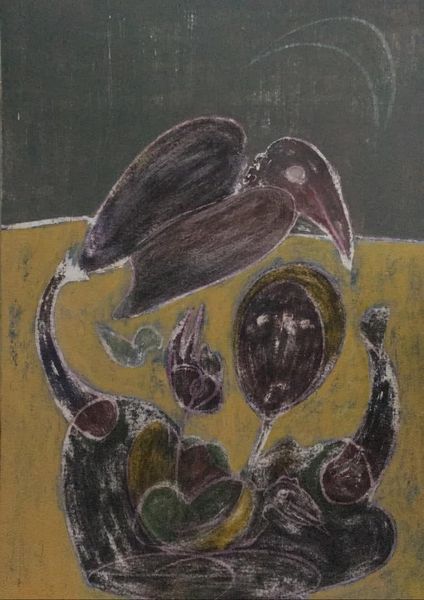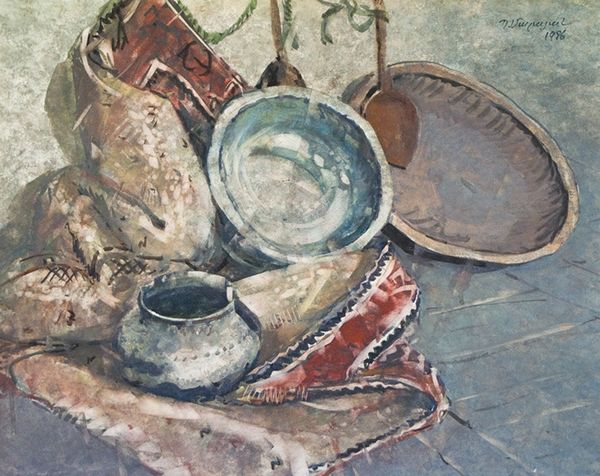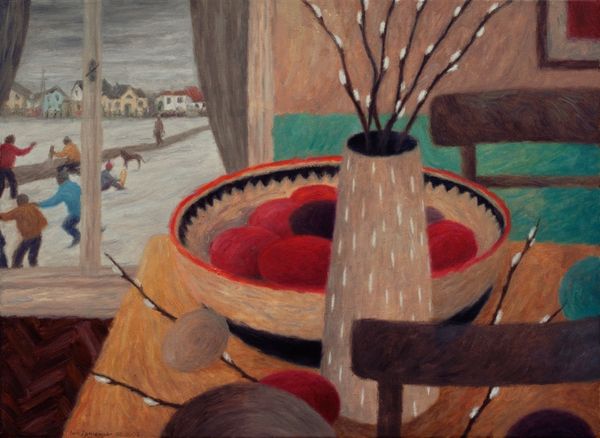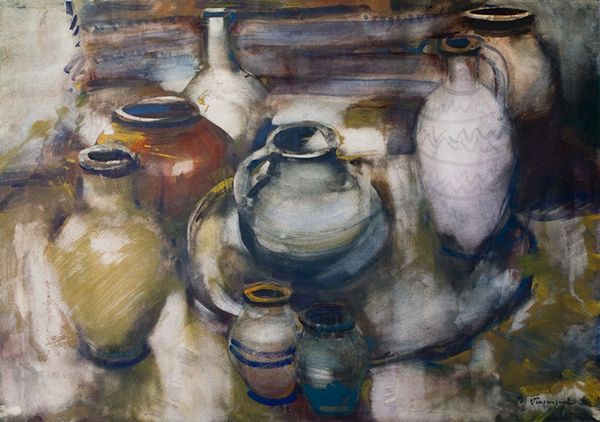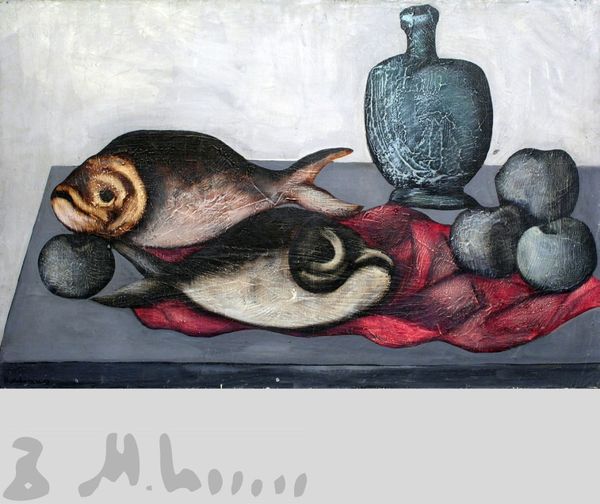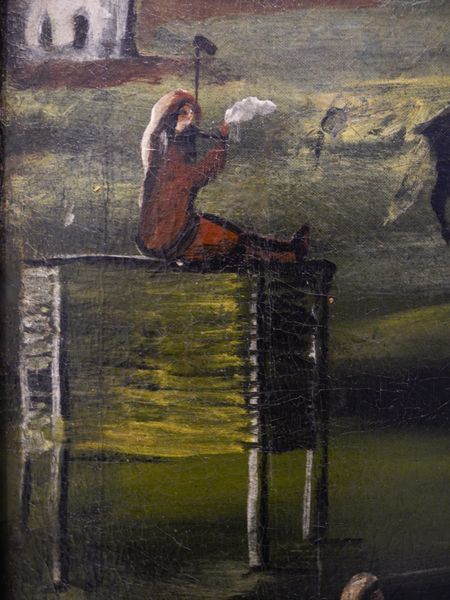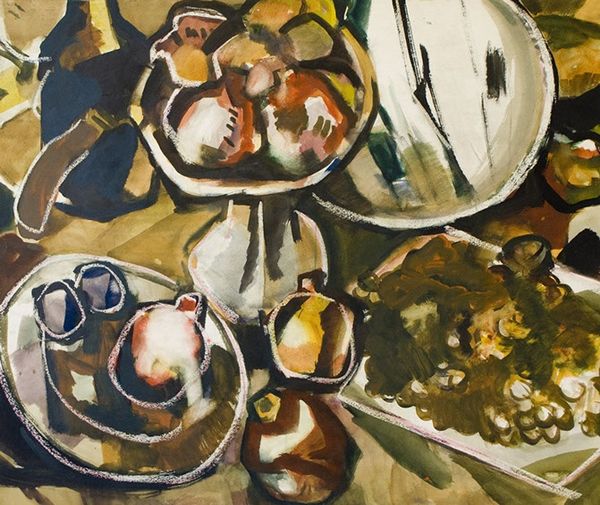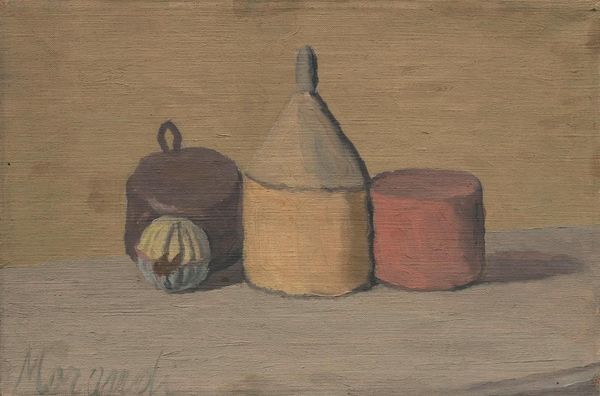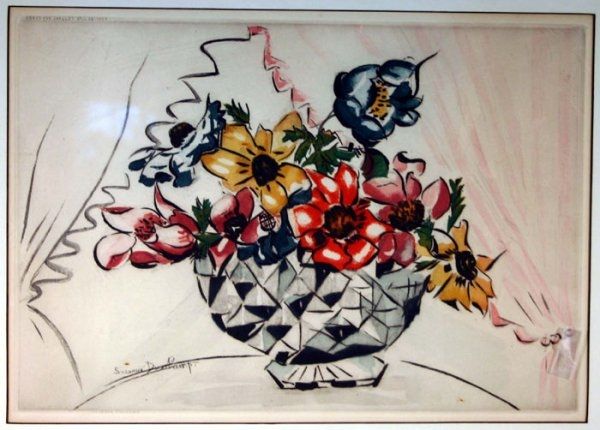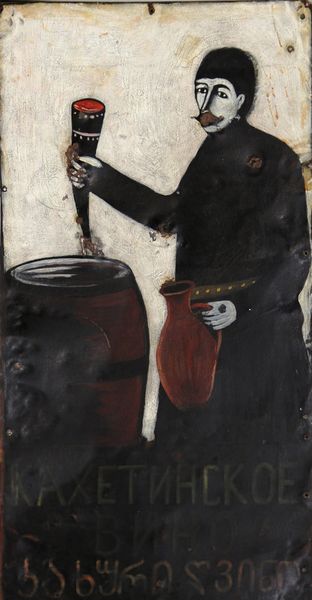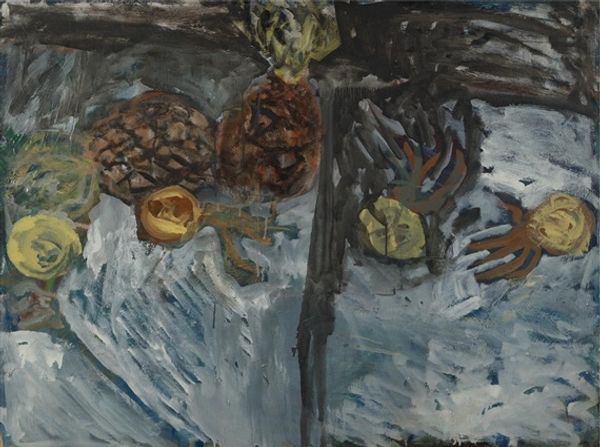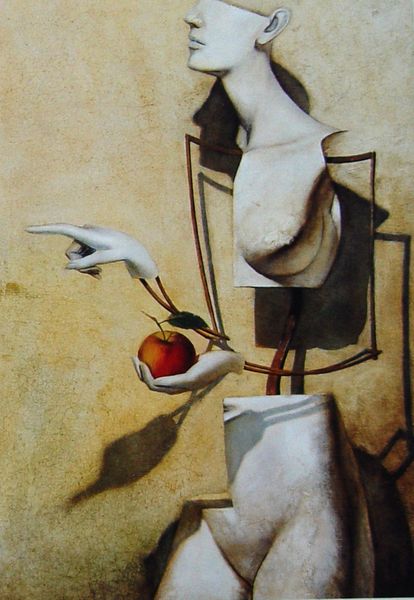
oil-paint
#
oil-paint
#
oil painting
#
geometric
#
modernism
Copyright: Public domain US
Curator: What a collection of earthy forms. I see something ancient and profoundly still here. Editor: It’s David Kakabadzé’s "Imeretian Still Life," painted in 1919. There's a simple collection of earthenware jugs, a pot...all rendered in oils, resting on what seems to be a plain white cloth. Curator: 1919, you say? Just after the world had gone bonkers, more or less? No wonder these objects feel like anchors. The geometry of them—the cones, cylinders, that lovely squat pot—feels so deliberately calming. Almost elemental. Editor: Kakabadzé certainly grounds the familiar. Take, for instance, the light. It seems less interested in revealing precise contours and more in simplifying objects to their absolute shapes, toying between modernism and something more primeval. What do you make of the high contrast against the black background? Curator: Well, that starkness...it throws everything into high relief. It reminds me that beauty resides not just in refinement, but also in what's been weathered and used. These pots—they have weight, history, an almost sculptural presence. Don’t you feel like you could reach out and feel the texture of the clay? Editor: Indeed. Observe how the composition is built around repetition and variation. The curves of the vessels converse across the tableau. There's also this curious geometric structure with an interplay of angular and curving lines—what purpose does this serve, in your opinion? Curator: Perhaps to challenge our expectations a bit? Kakabadzé isn’t content with simple realism; there’s a level of abstraction, pushing at the boundaries of how we perceive still life. It asks: what are we seeing beyond these physical shapes? Maybe this all has a direct tie with his homeland Imereti, but through my eyes, the composition reveals an intersection of peace and intensity. Editor: Yes. I feel Kakabadzé invites us to perceive these shapes afresh. It is fascinating how he coaxes such contemplative experience through basic forms and colours. Curator: It whispers secrets of simplicity and permanence to anyone willing to listen, I reckon. Editor: Well put! It seems Kakabadzé succeeded in turning simple domesticity into a testament to lasting forms.
Comments
No comments
Be the first to comment and join the conversation on the ultimate creative platform.
